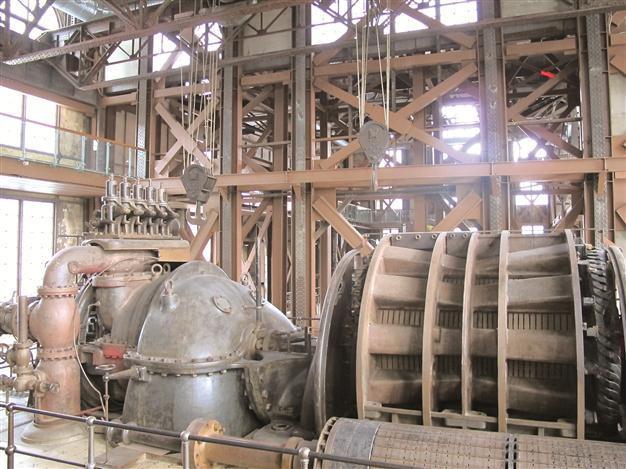Striking transformation of Silahtarağa Power Station
Wilco van Herpen Hürriyet Daily News

After the Silahtarağa power plant shut down in 1983, Orhan Cem Çetin started to take pictures inside the deserted building. The building
currently serves as Energy Museum. Wilco van Herpen photo
Orhan Cem Çetin is a famous Turkish art photographer. I met him at Santralistanbul, located on the Bilgi University campus. He is one of the teachers there and knows the place better than anyone. It was he who took countless pictures after the Silahtarağa Power Station shut down. The facility went into service on the Golden Horn, Istanbul’s oldest industrial area, in 1911 and supplied the city with power until 1983. The plant was closed due to environmental concerns because it was a coal-powered facility.
After the plant closed its gates in 1983, Çetin started taking pictures inside the deserted building. Time took its toll on the building gradually, as well as on the machinery inside. The facility found new inhabitants: pigeons. They occupied the building until the power plant was transformed into Bilgi University’s Silahtarağa campus. The big buildings were replaced with art exhibitions and artistic performances.
Enjoyable for all ages
It is a nice museum and very enjoyable for all ages because visitors are allowed to touch everything and receive stunning explanations about power generation. There is a screen that shows your body being filmed with a thermal apparatus. After a while the picture freezes and you “move out” of your own body and dance around and through yourself. They explain why sound is also a form of electricity with a round plate of wood surrounded by some kinds of nails. Inside the table there are hundreds of nails – thick ones and thin ones. When you turn the table the metal balls start rolling down, creating a very pleasant rain sound. It is fun to walk around but the historic part is upstairs.
After you climb numerous steps you arrive in the machine room. Huge turbines and other incredibly big machines were built on a special floor separate from the outer building. They made a kind of building inside the building because of the vibration. If they had made just one building and one floor, the building would have collapsed because of the giant turbines. So with this system the vibration was absorbed. The floor is decorated with nice tiles that look a bit strange in such a big industrial place.
Then there is the control room with the control panels in big circles. This is a really nice place for a photographer; everywhere you see different motifs, colors and structures. For children it is great because everybody is allowed to touch or try everything.
Haydarpaşa Station
After we finish our visit, Çetin and I go down to Karaköy and take the ferry to Haydarpaşa, the famous and beautiful train station on the Asian side of Istanbul. It was partially destroyed by a fire in November 2010, and Çetin had taken a picture of the fire then. The water used to extinguish the fire damaged the beautiful ceiling; the roof remains unrepaired.
We walk around, take some pictures and finally escape the biting cold by entering the station’s restaurant. The room is filled with music and customers who seem to be regulars. I look at the display window showing meze (appetizers). The food looks delicious. We sit down and order a couple of meze.
I take the boat back to Karaköy and almost fall asleep on the ferry. It is the end of the day; it is cold and I am now here on the warm boat.
Suddenly I notice some seagulls. Nothing special, you might say. There are always seagulls in Istanbul. But this time it was different. I saw hundreds, no, thousands of seagulls. They were all flying above the Bosphorus. It was as if a strange cloud of whirling fog was drifting above the sea. It looked scary with a ferry in the background and all those birds in front. It reminded me of Alfred Hitchcock’s “The Birds.”
